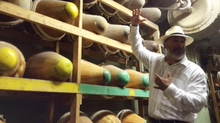Why Made-in-USA Fashion is Turning Heads
Faster delivery and customization are combining with automation to spur a return of apparel manufacturing to the U.S.
From small startups like Massachusetts-based Yogasmoga, known for their high-tech fabrics, to widely recognized brands like No nonsense, Made-in-USA apparel and textile manufacturing is in vogue. But that wasn’t always the case.
Apparel was among the first industries to be lost to offshore manufacturing. The trend for the labor-intensive apparel industry began as companies chased cheap labor to low-wage countries forty or more years ago. Today, only about 3% of our consumption is domestically sourced but the domestic industry is starting to recover. This is good news because eliminating just our apparel trade deficit would reduce the overall trade deficit by $120 billion per year or about 25% of the total. It would add about 1 million U.S. manufacturing jobs.

Today, U.S. apparel manufacturing is doing better than expected. Reshoring Initiative data shows that it ranks number six in industries that have reshored with 17,166 jobs by 287 companies since 2010. So what’s changed?
A host of factors are turning heads, like the need for speed, increased flexibility, smaller batches, and smaller inventories. Local sourcing is meeting the needs of today’s “on-demand” apparel consumers. Here are some of the latest reasons that companies are finding a competitive edge in the “local for local”style of manufacturing and sourcing.
Companies Reshoring
Startups: Domestic manufacturing is a strategic approach to guard against counterfeits, quality issues and intellectual property risks. For clothing startups, local for local i.e. reshoring increases efficiencies with smaller batches, offers greater flexibility for customization and style changes and speeds delivery to customers.
Yogasmoga, a three-year-old startup, was initially motivated to manufacture in the U.S. to develop their technical performance fabrics and protect intellectual property. However, founder and CEO Rishi Bali also found that local manufacturing is the only way to monitor quality, overcome communication issues and have the flexibility to quickly scale up his business. He says he is able to “meet demand much quicker.”
Buck Mason, Sasha Koehn's and Erik Schnakenberg’s apparel startup, chose LA to manufacture their T-shirts, jeans and button-downs. They were able to manufacture their first batch of T-shirts for just $5,000 locally. They estimated that overseas travel to simply research an offshore factory would cost about that amount. In addition to the enormous savings on travel, they determined that the close proximity made production easier to manage and ensured against risky, unethical workforce practices that could potentially damage their brand.
In 2012, four former MIT (Massachusetts Institute of Technology) students formed the Ministry of Supply (MOS) and set out to create a new apparel category of performance wear for professionals. In 2016, MOS premiered its printed blazer, a garment that comes out of a machine in one piece, leaving only the buttons to be sewn on to complete the garment. In December 2017, MOS introduced Velocity Suiting, a machine-washable suit. Giham Amarasiriwardena, cofounder, chairman and chief design officer, says, “It’s our vision of how the manufacturing of blazers could happen in the future.”
From their flagship store in Boston, customers choose the fabricand cuff, body and button color, a process that takes about 90 minutes. In three to five days, the custom made garment is ready to wear. “We are being bullish in translating the retail experience from buying off the racks to a place where customers will be part of the design process.”Amarasiriwardena believes this type of customization and customer experience is the future for apparel manufacturing and retail.
American Consumers are Driving the Reshoring Trend
The buying power of the American consumer isincreasingly a driving force in bringing more U.S. manufacturing jobs back home. According to a recent nationally representative study by Consumer Reports, almost 8 in 10 American consumers say they would rather buy an American-made product than an imported one, and more than 60% say they’re even willing to pay 10% more for it. So why is it important to Americans to buy U.S.-made products? A deeper dive into the study shows Americans believe that U.S.-made products are more reliable (84%), they want to keep manufacturing jobs at home (88%), to help the economy (87%) and to keep America strong in the global economy (84%). A recent Reshoring Initiative data report confirms that Made-in-USA is a strong impetus for bringing manufacturing back to the States and is fourth in the list of reasons cited for reshoring.
The Factory of the Future
Automation builds a strong case for reshoring. Finding the required workforce is a challenge for sourcing in the U.S., but as automation reduces labor-intensive tasks, local manufacturing many times proves to be more economical than sourcing from distant suppliers. Robots called “sewbots,” computerized production, 3D printing, and automated systems are changing the dynamics of U.S. apparel production.
Apparel was one of the first broad product categories to be lost and has about the highest percentage dependence on imports. As changing consumer demand moves more apparel manufacturing home, U.S. investment in innovation and automation will undoubtedly be part of the mix. The total cost savings, speed and flexibility of local production combined with new technologies level the playingfield and make U.S. manufacturing profitable. The success of apparel reshoring should encourage companies across a broad range of consumer goods to reevaluate their offshoring.
Harry Moser is founder/president of the Reshoring Initiative and Sandy Montalbano is a consultant to the Reshoring Initiative.






















